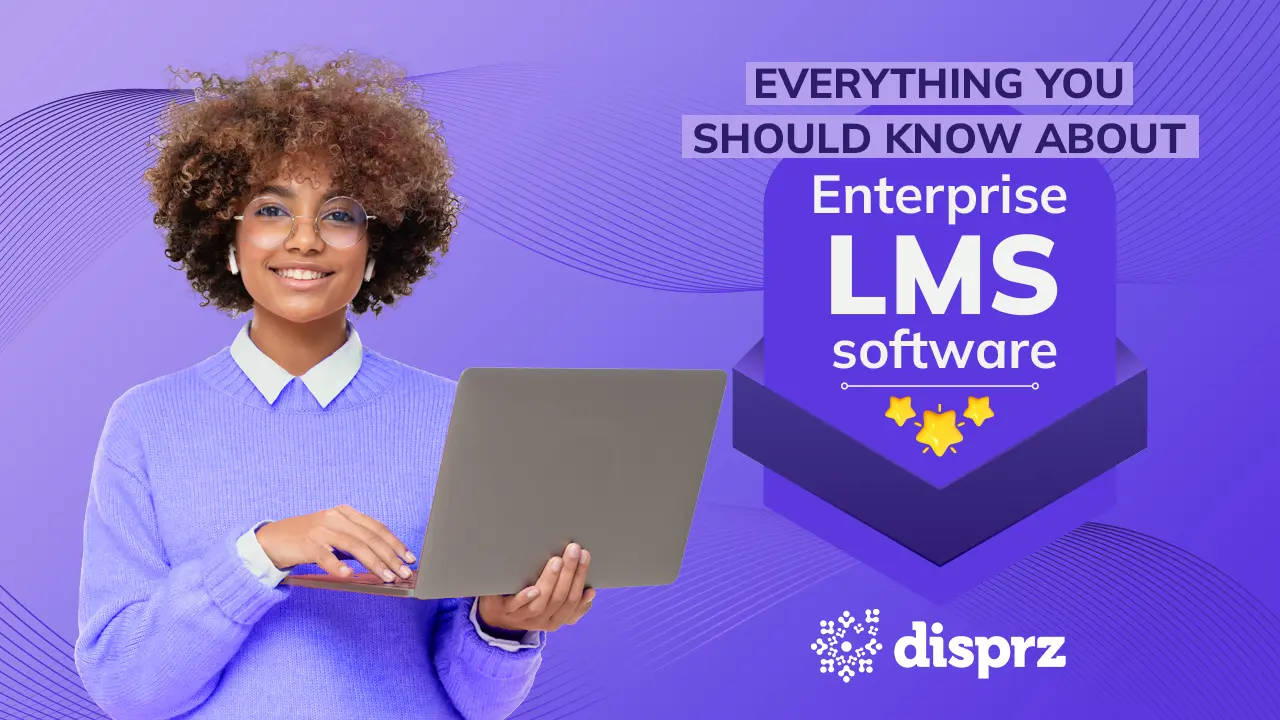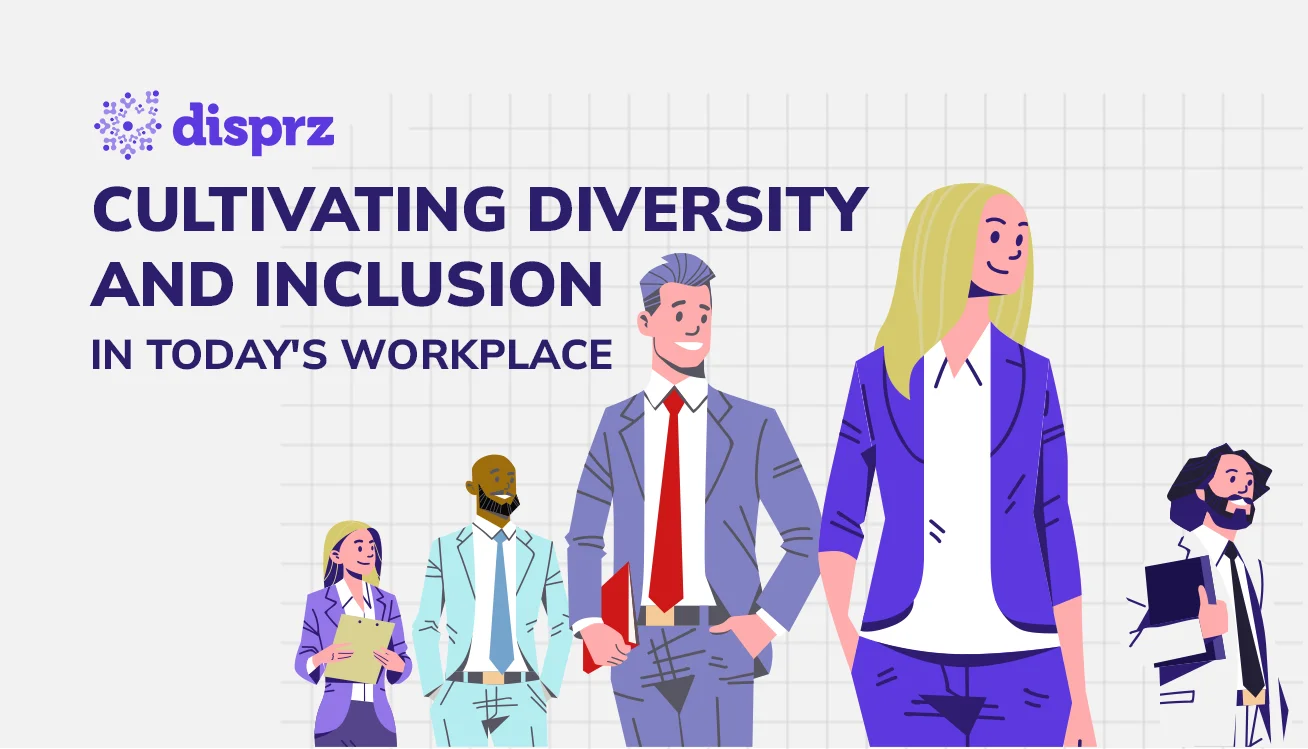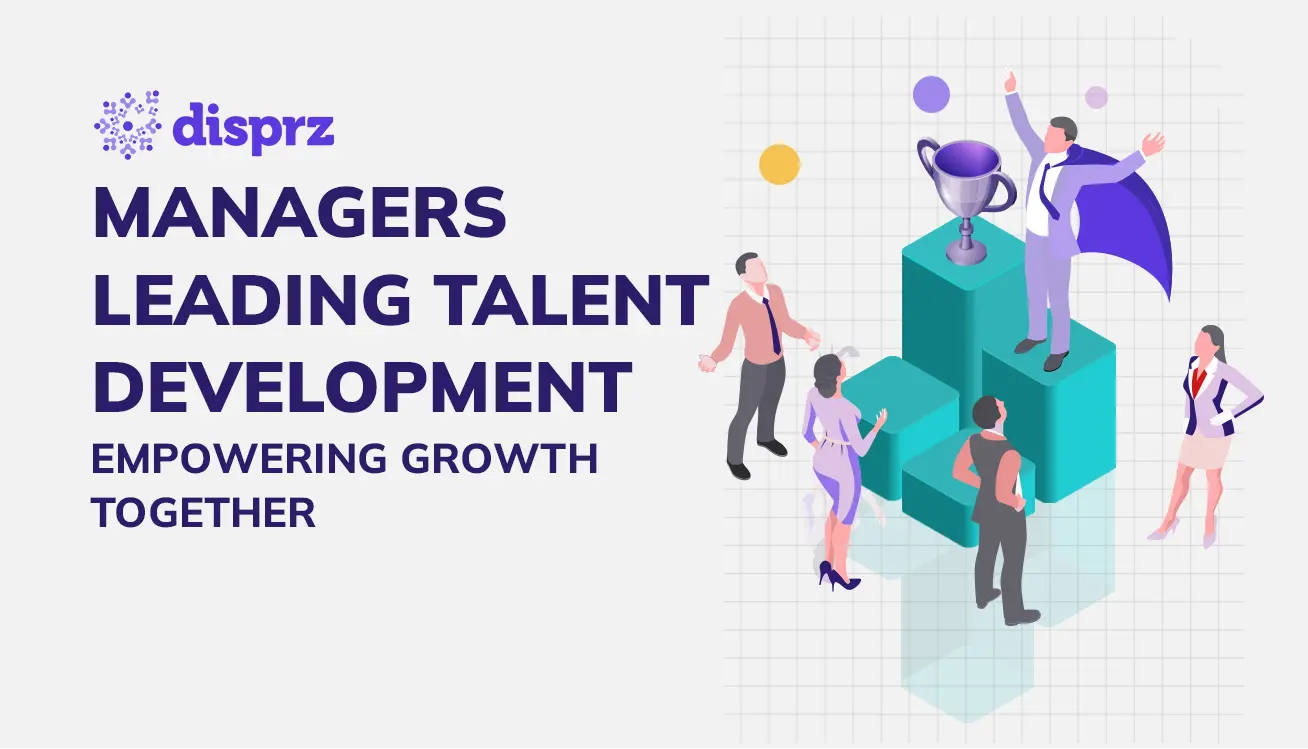
6 min read
• 18 Apr 2024
How to Retain High-Potential Employees: 7 Effective Tips
Learn how to retain high-potential employees in 2024 with our 7 effective strategies, including leveraging Disprz's AI-powered LXP and LMS for skill development.
-
eBookEmployee Upskilling - A Detailed Blueprint For Building A Skills-Driven Learning Culture
At disprz, we leverage AI to transform enterprise learning and skill development, serving as trusted advisors to top-tier businesses worldwide. Our extensive experience in the Learning & Development (L&D) landscape often brings us to one key concern: how to retain high-potential employees.
Because in today’s competitive business landscape, attracting top-tier talent is just half the battle; the real challenge lies in keeping it.
Mastering this aspect could very well be the secret to gaining a significant competitive advantage.
In this blog post, we’ll deconstruct how successful enterprises retain their high-potential employees, extracting proven strategies that have worked across various industries such as financial services, healthcare, insurance, and retail. Plus how our AI-powered Learning Experience Platform (LXP) and enterprise learning management system (LMS) play critical roles in enhancing employee retention.
We’ll also demonstrate how these strategies can be applied uniquely to your organization. This tailored approach ensures you not only retain your high-potential employees but also nurture them into your future leaders and innovators.
Let’s get started.
What’s at Stake if You Don’t Retain Your High-Potential Employees?
You may think it’s a no-brainer to retain your employees that have a successful path ahead of them. But it’s surprising how many companies overlook this critical task.
The impact of losing a high-potential employee extends beyond a simple vacancy.
It’s a missed opportunity for innovation, leadership, and growth. These employees will likely turn into your future leaders, the ones who drive transformative change and pump new ideas into your business. Losing them often means forfeiting strategic advantages and risking operational continuity.
What’s worse is that the recruitment, onboarding, and training of a new employee can cost up to 1.5x the original employee’s annual salary, not to mention the time and productivity lost during the transition. And this doesn’t even factor in the intangible costs: decreased morale, potential disruption to client relationships, and possible knowledge drain if these high-potentials join a competitor.
Focusing on retaining your high-potential employees is not just a choice; it’s an absolute ‘must’ for sustained business growth.
Now that we understand the stakes, let’s turn our attention to effective solutions. Here are seven strategies for retaining your high-potential employees.
7 Strategies for Retaining High-Potential Employees in 2024
In this section, we delve into seven tried-and-true strategies that will help your organization retain one of its most valuable assets – high-potential employees.
1. Leverage a Learning Experience Platform (LXP) or Learning Management System (LMS)
At the core of retaining high-potential employees is the offering of continuous learning and skill development. Our AI-Powered LXP and LMS are prime examples.
They can facilitate personalized learning experiences, adapting to each employee’s unique needs and pace. A LXP and LMS also provide a variety of learning resources, promoting a culture of continuous learning and upskilling.
Plus, with analytics and data-driven insights, our platforms give you the power to track progress, identify skill gaps, and deliver timely training interventions. This not only enhances your employees’ capabilities but also signals your investment in their long-term growth and career development, a key factor in employee retention.
2. Implement a Career Development Plan
A team member with high potential talent is often a future leader of your organization. To retain these employees, it’s important to provide a clear, viable career path. This includes opportunities for advancement, a personalized learning plan, and growth in role and responsibility.
A career development plan signals that your organization is invested in their long-term growth.
Regular discussions about their career goals, combined with transparent communication about advancement opportunities and the requisite skill development, can significantly increase their commitment and engagement.
This will not only help in retaining your high-potential employees but also in nurturing them into the leaders your organization needs for its future success.
3. Create a Mentoring Program
Mentoring programs are an excellent tool to produce engagement, development, and retention of a high-potential employee. By pairing them with experienced leaders within the organization, these employees gain direct insights into leadership styles, organizational intricacies, and career strategies.
Mentoring not only facilitates the transfer of knowledge and skills but also provides emotional support, helping high-potentials navigate their career journey more confidently – which is as important today more than ever.
The interpersonal connections established through these programs can enhance their sense of belonging and commitment to the organization, making them less likely to seek opportunities elsewhere and inflate your employee turnover numbers.
4. Recognize and Reward Efforts
Failing to show appreciation for your high-potential employees can lead to disengagement and eventually their departure. Recognizing their hard work, innovative ideas, and contributions fosters a sense of value and accomplishment.
Regular, meaningful recognition (both public and private) coupled with rewards that reflect their efforts are effective ways to boost their job satisfaction and commitment to your organization. And these rewards don’t always have to be financial – they could be new opportunities, more responsibility, or personal development resources.
A culture of recognition is a performance management approach that many companies lack in 2024. But the ones that do make their employees feel seen and appreciated, significantly improving their retention.
5. Promote Work-Life Balance
Work-life balance is more than just a buzzword from the Great Resignation; it’s a crucial aspect of employee satisfaction and retention. Did you know that roughly 6 out of every 10 workers say they’ll turn down a job offer if they think it’ll bring a poor work-life balance?
High-potential employees often work under immense pressure, which, without balance, could lead to burnout and disengagement. Encouraging them to maintain a healthy equilibrium between their work commitments and personal life demonstrates that you value their wellbeing.
To help build this healthy balance for your team, you can: create a flexible work environment (Ex: allow remote work or hybrid schedule), respect their personal time (Ex: unlimited PTO), and promote activities that reduce stress (Ex: after-work happy hours or teambuilding events).
By creating a company culture that supports work-life balance, you’ll not only enhance the productivity and creativity of your high-potential employees but also significantly increase their likelihood of staying with your organization.
6. Encourage Employee Participation
Involving your top talent in decision-making processes and strategic planning can significantly enhance their sense of belonging and commitment to your organization. This participation not only validates their expertise and skills but also reinforces their value and potential for leadership roles.
It also gives them a broader perspective of the company and a clearer understanding of their role in achieving the company’s goals and objectives. Creating an environment where each person’s voice is heard and their ideas are valued can strengthen employee engagement and loyalty.
By actively encouraging employee participation, you’re investing in their professional development and fostering a culture of inclusivity and mutual respect, critical for retaining your high-potential employees.
7. Foster an Inclusive and Positive Work Environment
A positive and inclusive work environment where diversity is celebrated and all employees feel valued, respected, and heard, plays a crucial role in employee retention. High-potential employees, just like their peers, are more likely to stay in an organization that promotes a sense of belonging and values their unique perspectives.
This includes promoting diversity in thought, creating safe spaces for dialogue, and ensuring equal opportunities for all.
It’s important to proactively address any workplace concerns and provide support where needed, especially before an issue become too big. If you let an issue linger, you could risk creating a negative work environment that fuels dissatisfaction and disengagement, undermining your retention efforts and potentially driving your high-potential employees to explore opportunities elsewhere.
Conclusion
In this post, we’ve explored seven strategic approaches to retaining high-potential employees, hopefully emphasizing to you the importance of continuous learning, career development, mentoring, recognition, work-life balance, employee participation, and a positive work environment.
Retaining your high-potentials can’t be overstated – these individuals drive innovation, leadership, and growth within your organization, making them invaluable to your business success.
To make your retention strategies even more effective, consider leveraging disprz’s LXP and LMS, offering personalized learning experiences and skill development that keep your high-potential employees engaged, satisfied, and committed to your organization.
About the author
Kumar
More Resources
4 min read
• 15 Apr 2024
Unlocking the Power of Managerial Engagement in Talent Development
4 min read
• 09 Apr 2024
Nurturing Excellence in Building Leadership Pipelines
Sign up to get free resources and stay up to date with Disprz!
Discover how Disprz can align learning and upskilling with your desired business outcomes.





